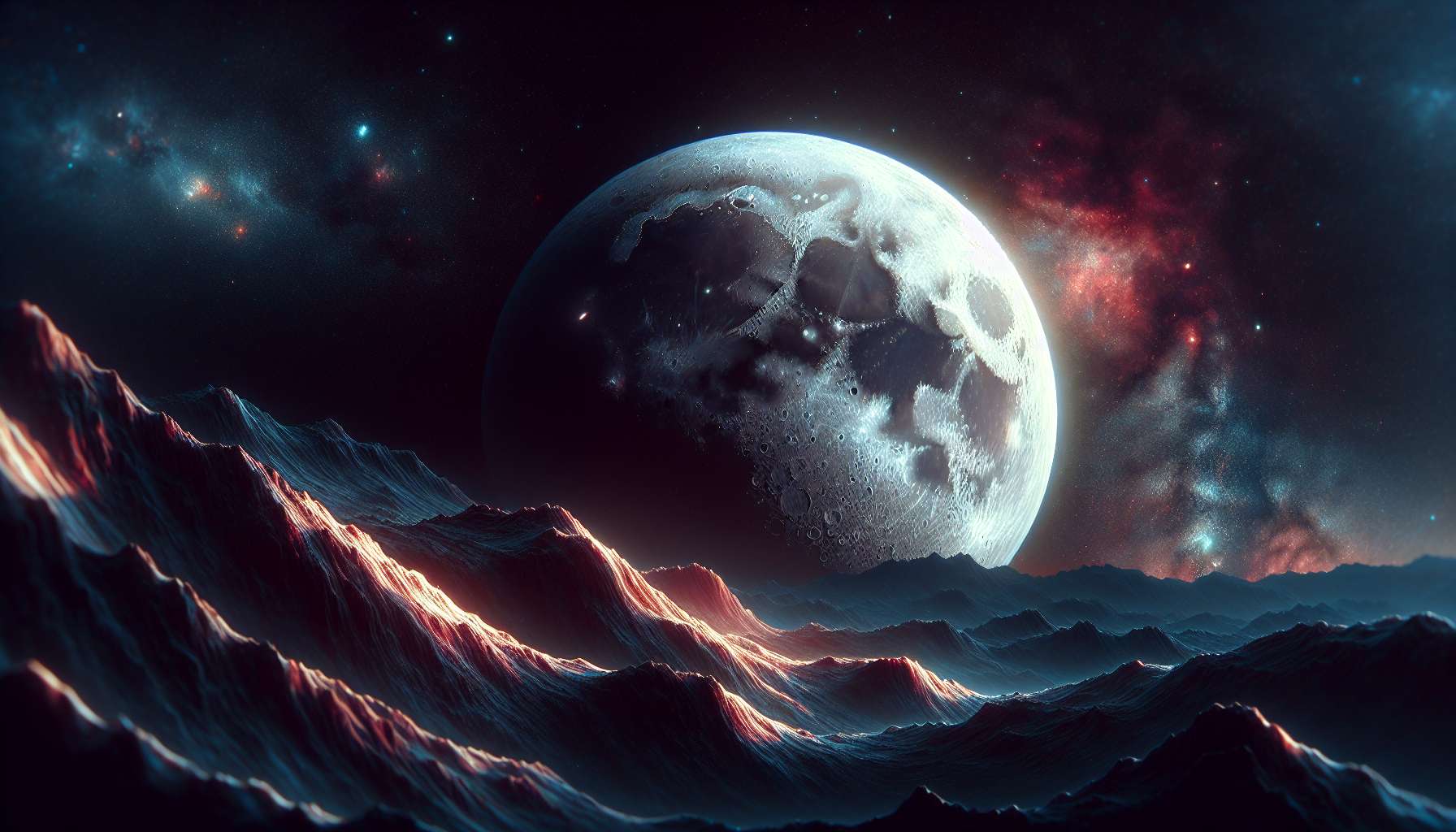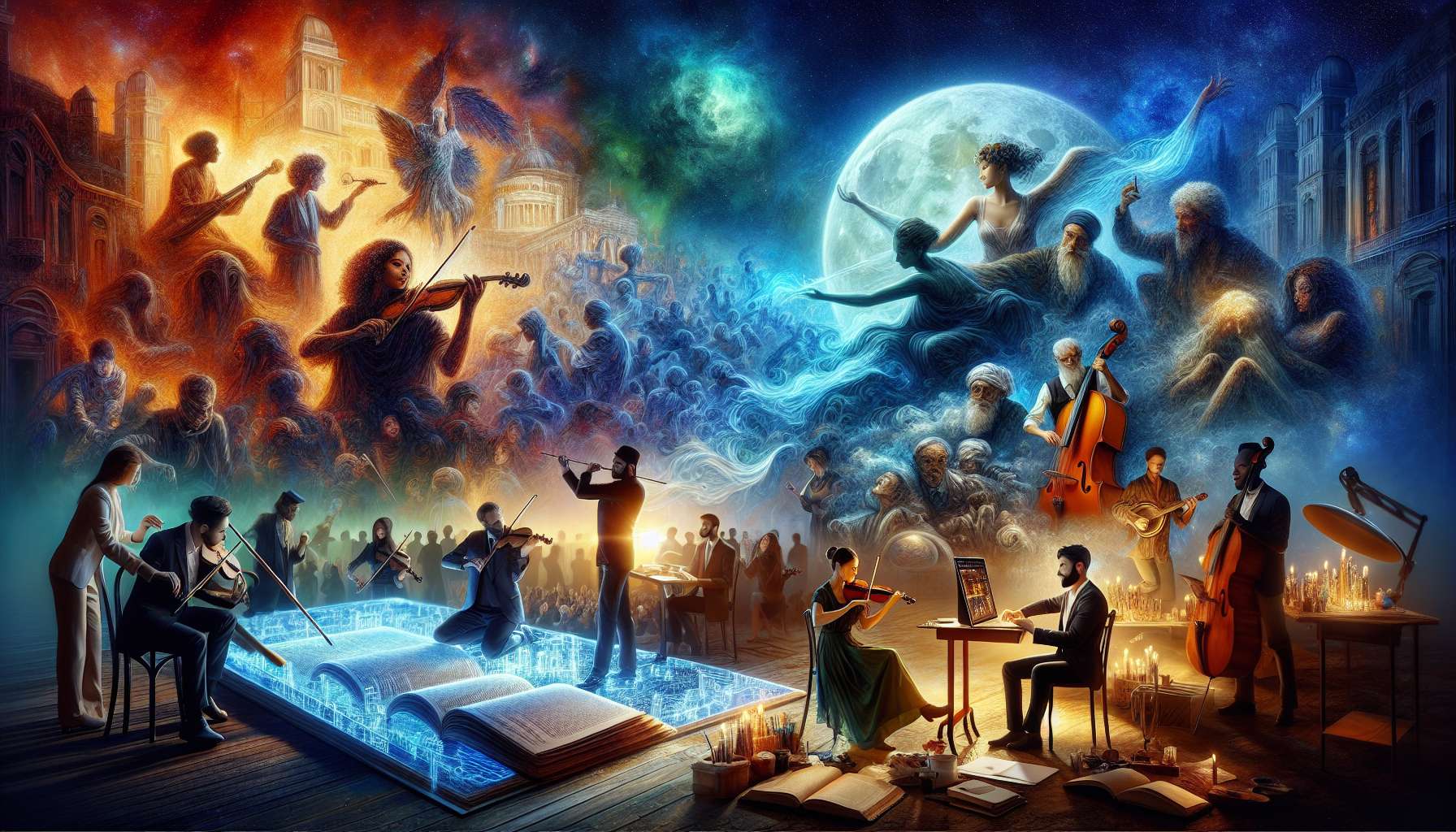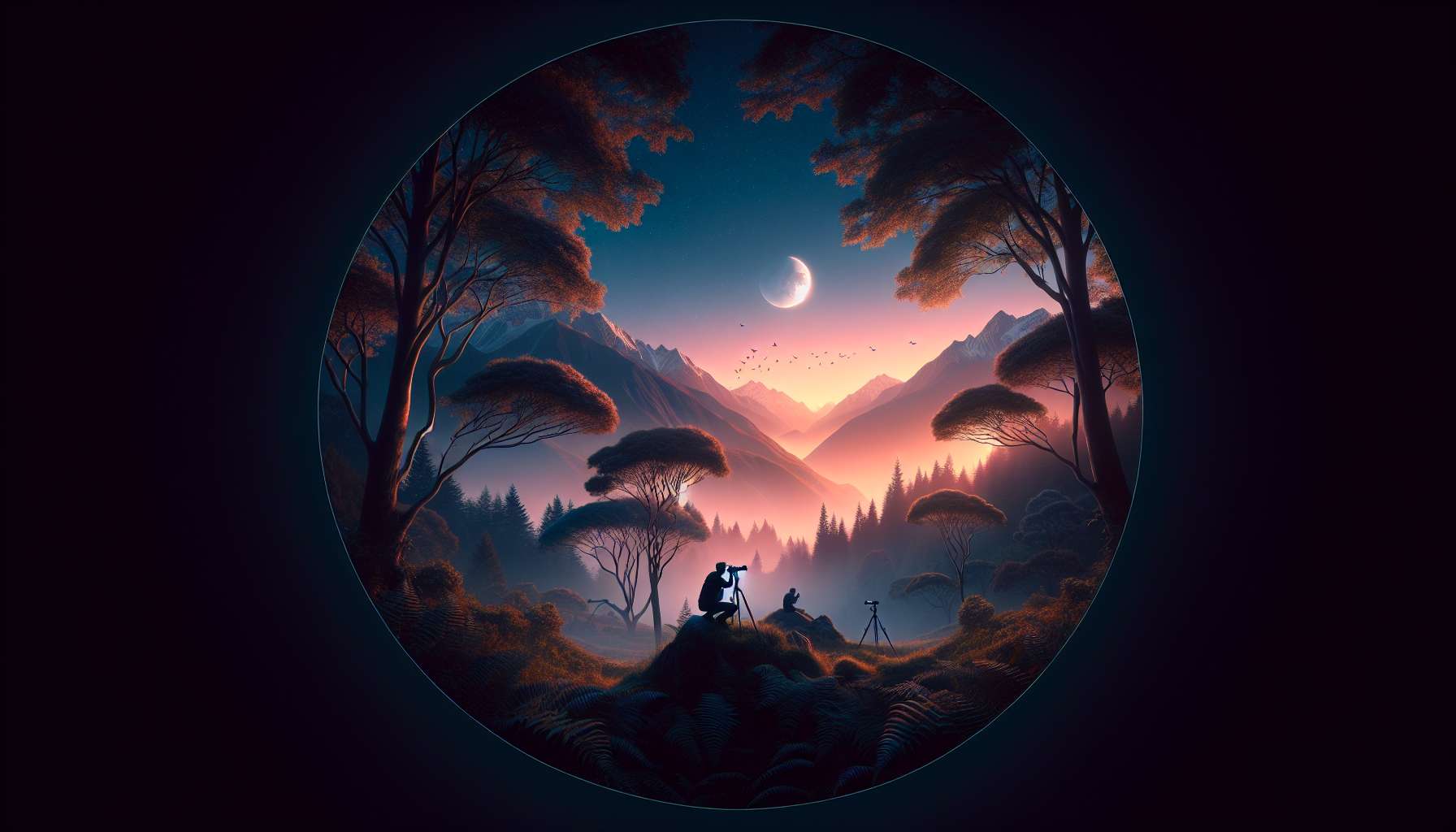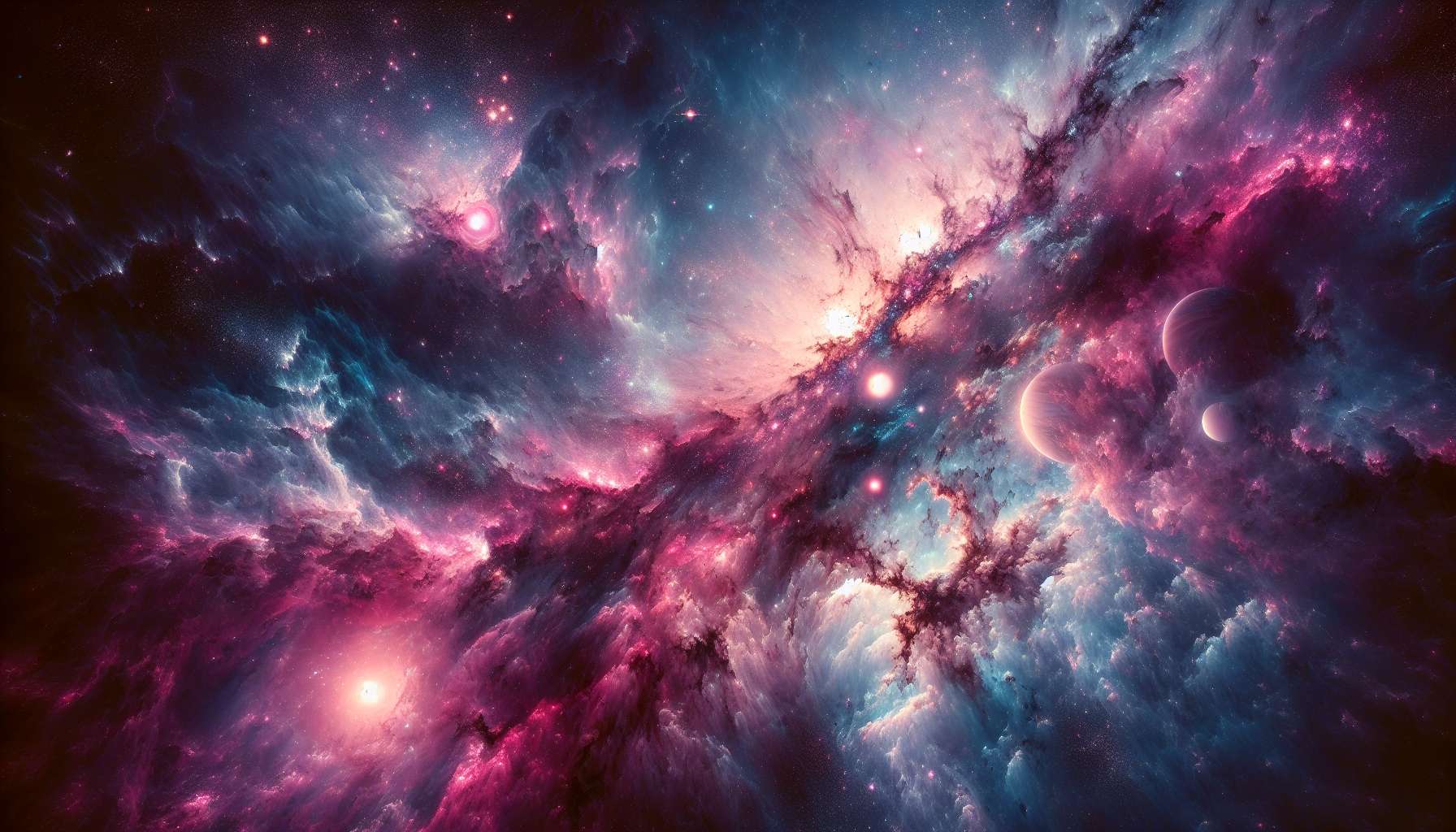Lunar-Inspired Artwork: Exploring the Celestial Influence on Creativity
When we gaze up at the night sky and see the glowing orb of the moon, it’s hard not to feel a sense of wonder and awe. The moon has captivated humanity for centuries, inspiring art, literature, and scientific exploration. In the world of art, the moon’s mystical allure has been a popular theme for artists across cultures and time periods. From ancient cave paintings to modern digital art, lunar-inspired artwork continues to mesmerize and intrigue viewers.
What is it about the moon that makes it such a compelling subject for artists? How has lunar-inspired artwork evolved over the years, and what are some of the most iconic pieces that have been created? In this article, we will delve into the fascinating world of lunar-inspired artwork, exploring its history, significance, and impact on the art world.
The Moon as a Muse: A Brief Overview
Since ancient times, the moon has been a symbol of mystery, beauty, and spirituality. Its ever-changing phases and luminous presence in the night sky have inspired countless artists to capture its ethereal essence on canvas, in sculpture, and through other creative mediums. From the classical paintings of the Renaissance to the abstract works of the 20th century, the moon has been a constant source of inspiration for artists seeking to explore themes of nature, mythology, and the human experience.
One of the earliest known examples of lunar-inspired artwork is the Lascaux cave paintings in France, which date back over 17,000 years. These prehistoric artworks depict various animals and symbols, including what some scholars believe to be representations of lunar cycles. The moon has also played a significant role in the art of ancient civilizations such as the Egyptians, Greeks, and Chinese, where it was often associated with deities, fertility, and the afterlife.

The Moon in Art History
Throughout art history, the moon has been a recurring motif in various art movements and styles. In the Romantic era, artists like Caspar David Friedrich and William Turner often depicted the moon as a symbol of divine light, illuminating the dark corners of the natural world. The moon also played a prominent role in the works of the Impressionists, who were fascinated by its effects on light and color. Artists like Claude Monet and Camille Pissarro frequently painted scenes of moonlit landscapes, capturing the ethereal beauty of the night sky.
Modern and contemporary artists have continued to explore the theme of the moon in innovative ways. From the surrealist works of Salvador Dali to the cosmic paintings of Yayoi Kusama, the moon has been a source of inspiration for artists pushing the boundaries of traditional art forms. In recent years, digital artists have also embraced the moon as a subject, using cutting-edge technology to create immersive and interactive artworks that explore the celestial body’s influence on human culture and imagination.
The Moon in Different Cultures
Across cultures and civilizations, the moon has held a special place in mythology, religion, and folklore. In many ancient societies, the moon was worshipped as a deity or revered as a symbol of fertility and rebirth. In Chinese culture, the moon is associated with the lunar goddess Chang’e, who is said to reside in the moon palace and watch over humanity. In Japanese folklore, the moon is often depicted as a symbol of love and longing, as seen in the legend of the Moon Rabbit pounding rice cakes on the moon’s surface.
These cultural beliefs and traditions have influenced the way artists from different parts of the world have interpreted and represented the moon in their artwork. From the intricate moon gardens of Persia to the celestial paintings of the Maori people, the moon’s symbolism and significance vary widely depending on the cultural context. By exploring these diverse perspectives, artists have been able to create a rich tapestry of lunar-inspired artwork that reflects the universal themes of beauty, mystery, and transcendence.
Lunar Landscapes: Capturing the Moon’s Majesty
One of the most popular motifs in lunar-inspired artwork is the depiction of lunar landscapes. Artists have long been fascinated by the barren, otherworldly terrain of the moon, which offers a stark contrast to the lush landscapes of Earth. From the craters and mountains of the moon’s surface to the vast expanse of space that surrounds it, the lunar landscape provides a blank canvas for artists to explore themes of isolation, exploration, and discovery.
One of the most famous examples of lunar landscape art is Galactic Center by artist David Hardy, which depicts a futuristic vision of the moon as a hub of interstellar travel and exploration. Hardy’s detailed and realistic portrayal of the moon’s surface has inspired generations of artists and scientists to imagine what life on the moon could be like in the distant future.
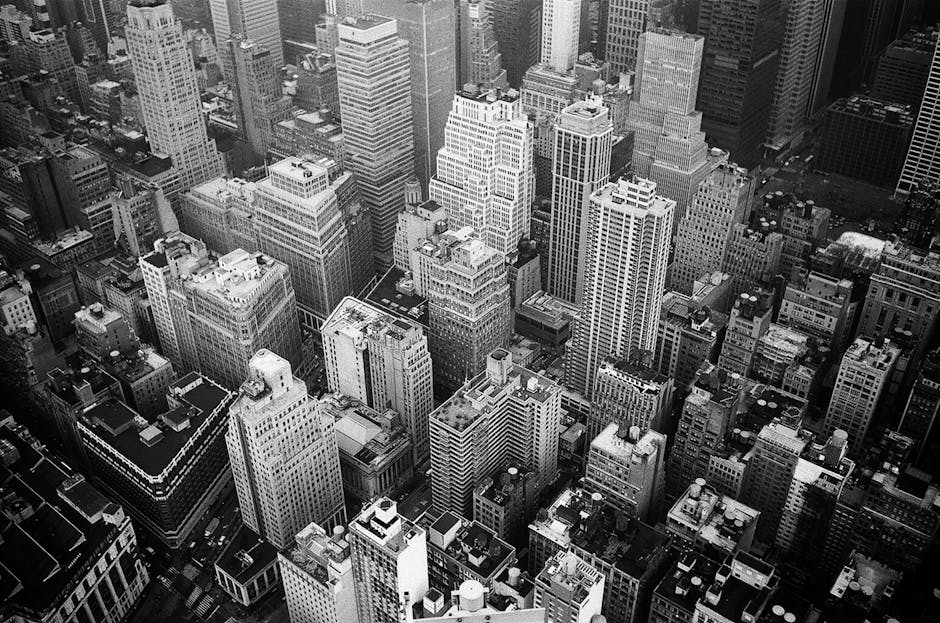
The Moon in Popular Culture
Outside of the art world, the moon has also had a significant impact on popular culture, inspiring countless films, books, and songs. From the iconic moon landing of 1969 to the science fiction novels of Arthur C. Clarke and Isaac Asimov, the moon has captured the public’s imagination in ways that transcend traditional artistic mediums. In music, artists like Frank Sinatra and Claude Debussy have composed songs and symphonies inspired by the moon’s beauty and mystery.
In film and television, the moon has been a popular setting for science fiction and fantasy stories, from George Melies’ A Trip to the Moon to Stanley Kubrick’s 2001: A Space Odyssey. These works of art have helped to shape our cultural understanding of the moon as a symbol of exploration, adventure, and the unknown. By incorporating the moon into their storytelling, artists have been able to create narratives that resonate with audiences on a deep and emotional level.
Expert Opinions: The Moon’s Influence on Artistic Expression
According to art historian Dr. Maria Lopez, the moon’s influence on artistic expression is rooted in its symbolic significance as a universal symbol of beauty, mystery, and spirituality. “The moon has a timeless appeal that transcends cultural boundaries and speaks to the human experience in a profound way,” says Dr. Lopez. “Artists have long been drawn to the moon as a subject because of its ability to evoke a sense of wonder and awe.”
Contemporary artist Alice Chen agrees, noting that the moon’s enigmatic presence in the night sky serves as a powerful muse for artists looking to explore themes of isolation, introspection, and interconnectedness. “The moon has a kind of poetic beauty that is both captivating and haunting,” says Chen. “As an artist, I am constantly inspired by its luminous glow and ever-changing shapes.”
Common Misconceptions About Lunar-Inspired Artwork
One common misconception about lunar-inspired artwork is that it is limited to traditional forms such as painting and sculpture. In reality, artists working in a variety of mediums, from photography and digital art to performance and installation, have found innovative ways to explore the theme of the moon in their work. By pushing the boundaries of artistic expression, these artists have been able to create diverse and dynamic interpretations of the moon’s influence on human culture.
Another misconception is that lunar-inspired artwork is purely decorative or aesthetic in nature. While the moon’s beauty and mystique certainly play a role in inspiring artists, many works of lunar-inspired art also explore deeper themes such as identity, memory, and the passage of time. By delving into these complex and nuanced topics, artists are able to create artwork that resonates with viewers on an emotional and intellectual level.
Conclusion
To wrap things up, lunar-inspired artwork offers a fascinating glimpse into the intersection of art, science, and spirituality. By exploring the moon as a subject, artists are able to tap into a wellspring of creativity and imagination that transcends time and space. Whether through traditional painting and sculpture or cutting-edge digital art, the moon continues to inspire artists to create works that challenge our perceptions and expand our understanding of the world around us.
As we look to the future, it is clear that the moon will remain a powerful muse for artists seeking to explore the mysteries of the cosmos and the depths of the human soul. By embracing the moon’s timeless appeal and enigmatic presence, artists can continue to create artwork that moves, inspires, and delights audiences around the world.

